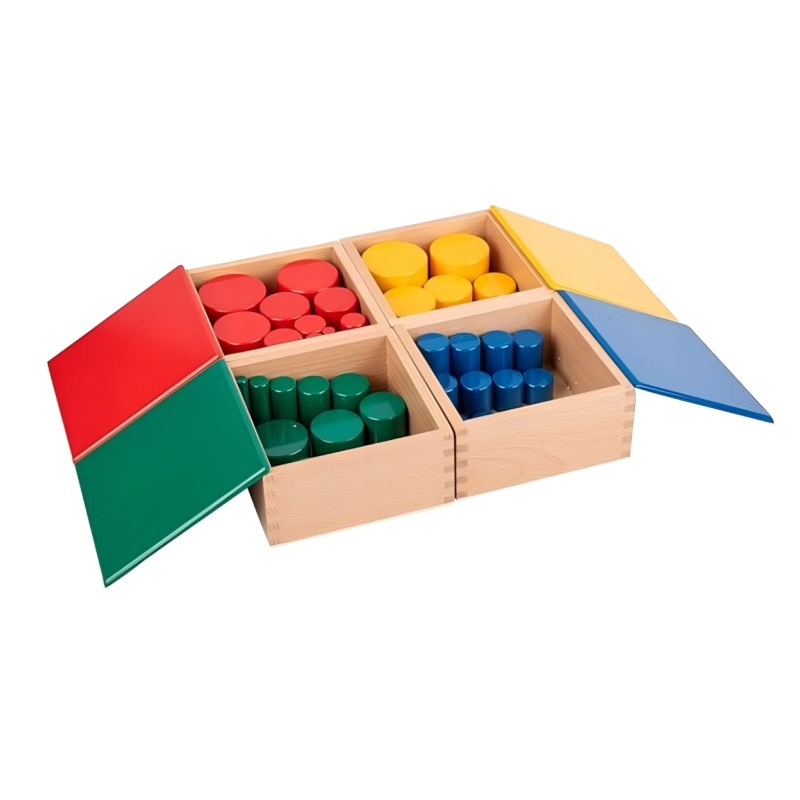
Pink Tower A040
A040 Pink Tower
Materials:
Ten pink wooden cubes, varying in size from one cubic centimeter to one cubic decimeter.
Presentation:
Carrying the Cubes:
The Directress demonstrates how to carry the cubes to the floor mat.
For the smallest four cubes, use a three-finger grip (thumb, index, and middle finger) to grasp each cube from the top and place them randomly on the mat.
For cubes four through seven, use one hand to carry each cube to the mat.
For the largest three cubes, use both hands, balancing the cube with the palms.
Building the Tower:
Place all cubes randomly on the mat.
The Directress demonstrates building the tower, starting with the largest cube and placing the next largest centrally on top.
She may demonstrate with the first three cubes, then invite the child to place subsequent cubes.
Allow the child to place the final cube independently.
Observation and Dismantling:
Once the tower is complete, invite the child to observe it from above.
The Directress then demonstrates dismantling the tower, starting with the top cube.
She shows the first two removals and invites the child to continue.
Returning to the Shelf:
Return the cubes to the shelf, beginning with the largest.
Points of Interest:
The child may choose to build the Pink Tower independently.
The cubes clearly demonstrate size differences through variations in three dimensions (length, width, height).
For introductory activities, consider building towers with:
The three or four smallest cubes.
The three largest cubes.
Three consecutive middle-sized cubes.
For children with special needs, use five cubes, selecting every other cube.
The smallest cube requires precise hand-eye coordination due to its size.
The three-finger grip used for the smaller cubes prepares the child for pencil grip.
Repeated use of the cubes develops muscular memory for spatial gradations.
Purpose:
Develop visual and muscular perception of dimension.
Refine coordination and fine motor control.
Indirectly prepare for mathematics through comparison, grading, and seriation.
Introduce mathematical vocabulary.
Variations:
Horizontal Building: Build the tower horizontally on the mat.
Size Recognition Game:
Select three cubes of different sizes.
Give instructions like, "Bring me the largest cube," or "Bring me a cube larger than this one."
Spiral Building: Build the tower in a spiral formation.
Two-Dimensional Representation:
Provide pink paper squares matching the cube sizes.
Have the child build the tower and then create a 2D representation by gluing the squares onto paper.
 Knobless Cylinders (Set of 4) A030
Knobless Cylinders (Set of 4) A030
